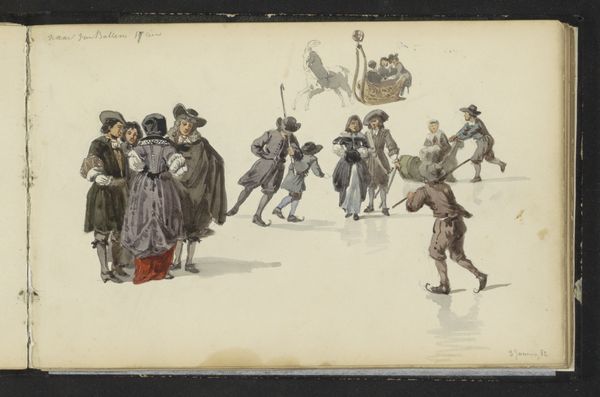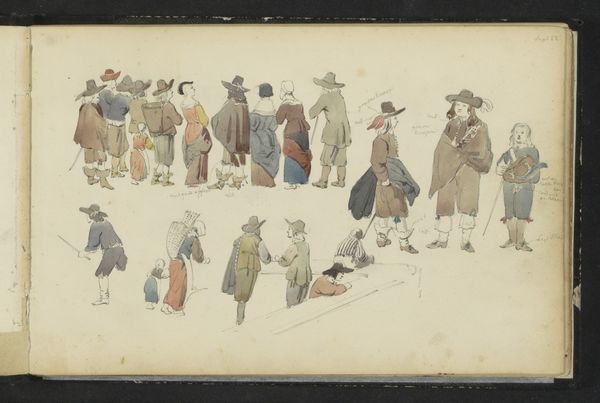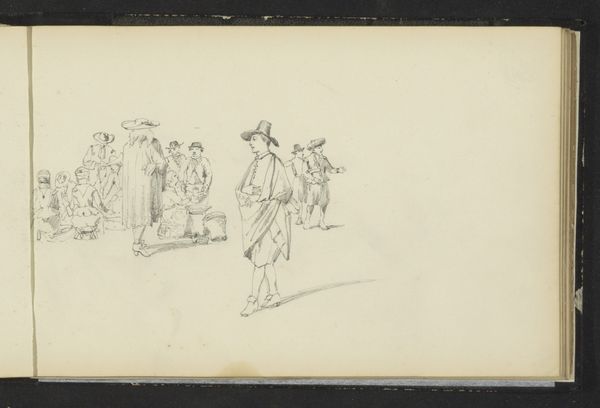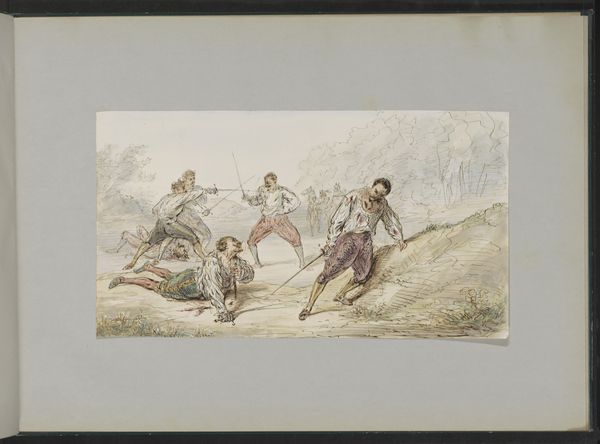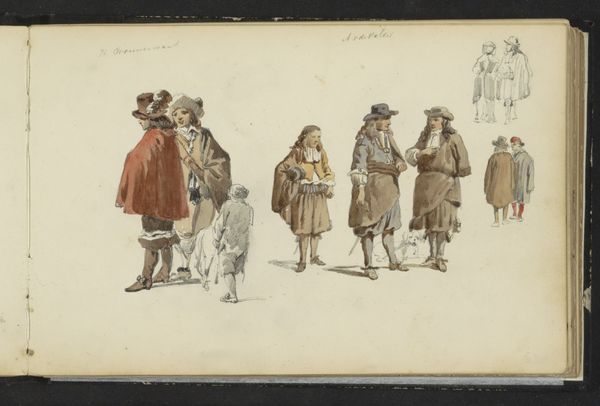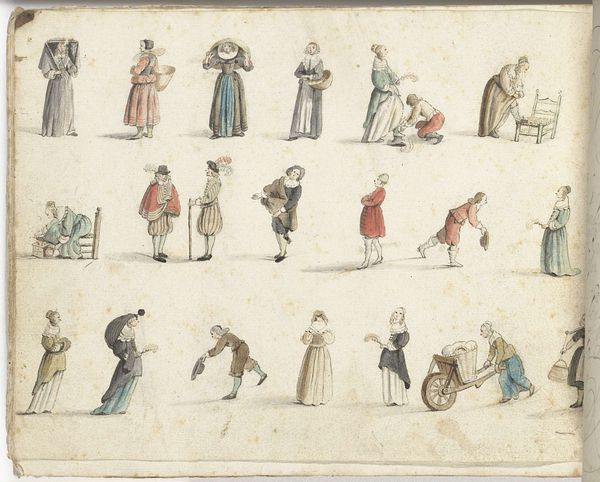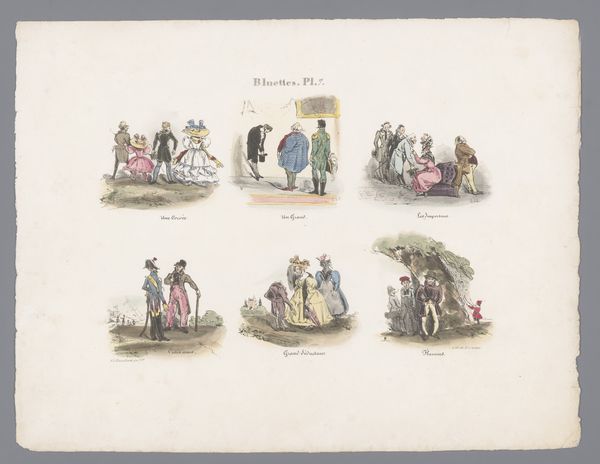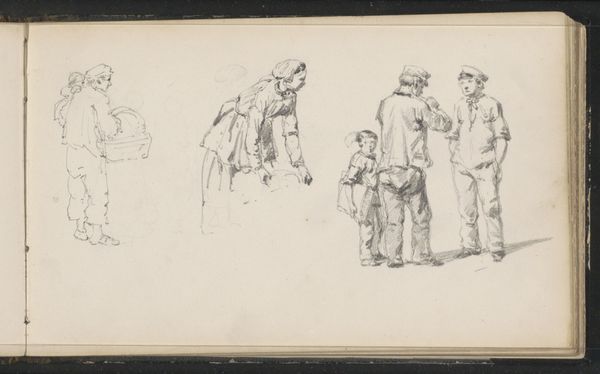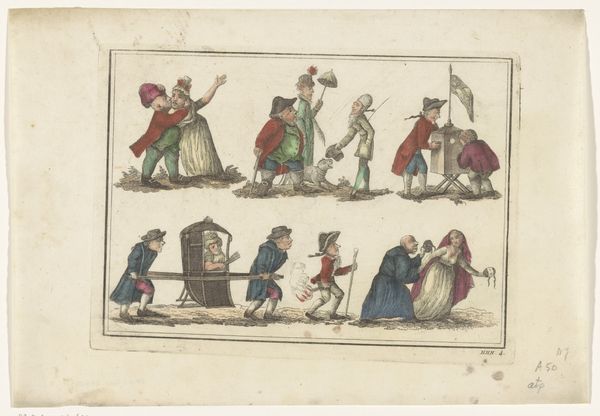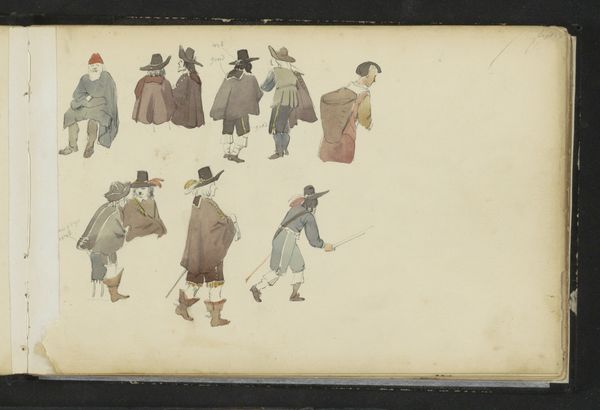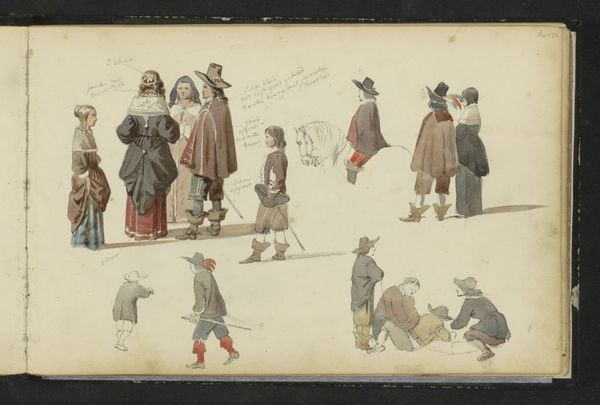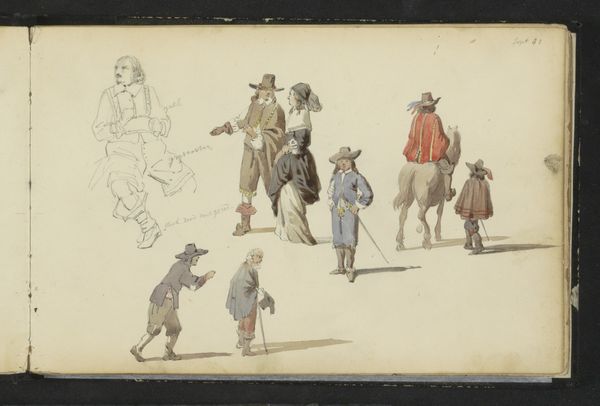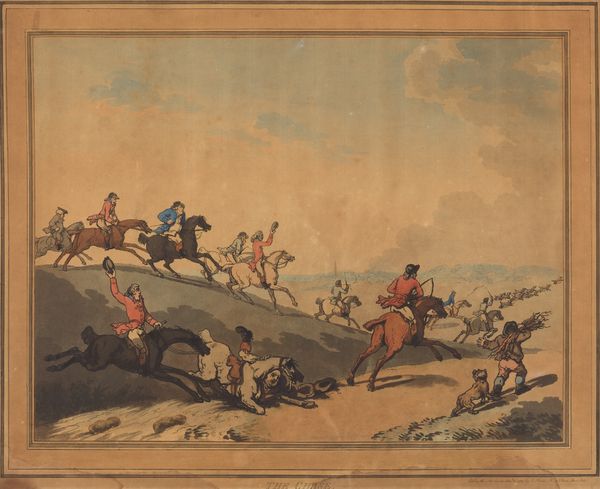
drawing, coloured-pencil, plein-air, pencil
#
portrait
#
drawing
#
coloured-pencil
#
impressionism
#
plein-air
#
landscape
#
figuration
#
coloured pencil
#
pencil
#
genre-painting
Copyright: Rijks Museum: Open Domain
Curator: What immediately strikes me about Cornelis Springer's "Figuren in zeventiende-eeuwse kleding" is its feeling of a fleeting moment captured in pencil and coloured pencil. It feels so spontaneous, like a visual diary entry. Editor: Indeed. This work, likely from 1882 and housed here at the Rijksmuseum, showcases Springer's interest in reimagining historical scenes within a contemporary, impressionistic lens. It reflects a broader 19th-century trend of historicism and romanticized past eras. Curator: The composition is quite remarkable. Observe how Springer balances the figures – notice their varied postures and individualized details. The limited palette unifies the overall impression, with careful tonal shifts in the pencils creating a sense of depth, despite the stark background. Editor: Right, the conscious artifice. The blank background really flattens it—accentuating that sense of theatre. How are we meant to interpret these costumed figures? Perhaps Springer is trying to tell a story about social hierarchies, through this lens of 17th century clothing and Dutch Golden Age aesthetics, echoing the themes explored in popular history painting of the time. The staging gives an oddly static feel. Curator: The materiality is especially interesting—a drawing in coloured pencil provides a less imposing surface than an oil painting but a larger visual depth than merely sketching, providing a level of approachability. I think this makes the image seem both casual and timeless. I admire the controlled technique for capturing an era of great cultural transformation and doing so in a tangible yet fresh medium. Editor: Yes, I see it now. While ostensibly portraying figures from the 17th century, this image subtly interrogates 19th-century ideas about national identity. In the end, Cornelis Springer gives us a scene to reflect on past cultural splendors—while indirectly posing critical questions regarding nostalgia, perception, and public representation of history.
Comments
No comments
Be the first to comment and join the conversation on the ultimate creative platform.
